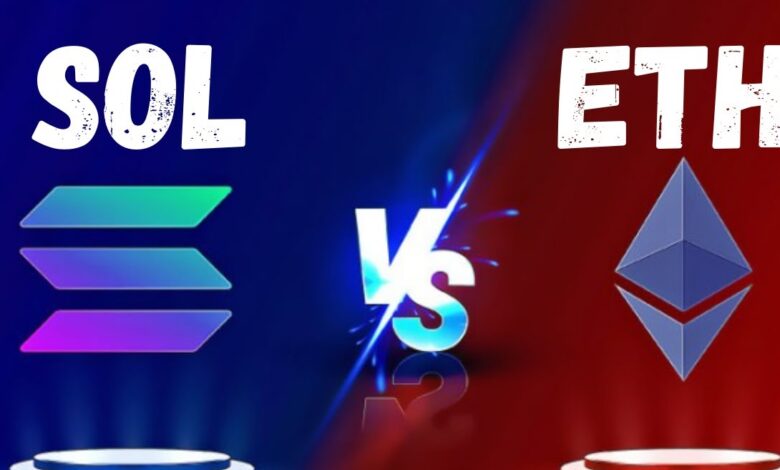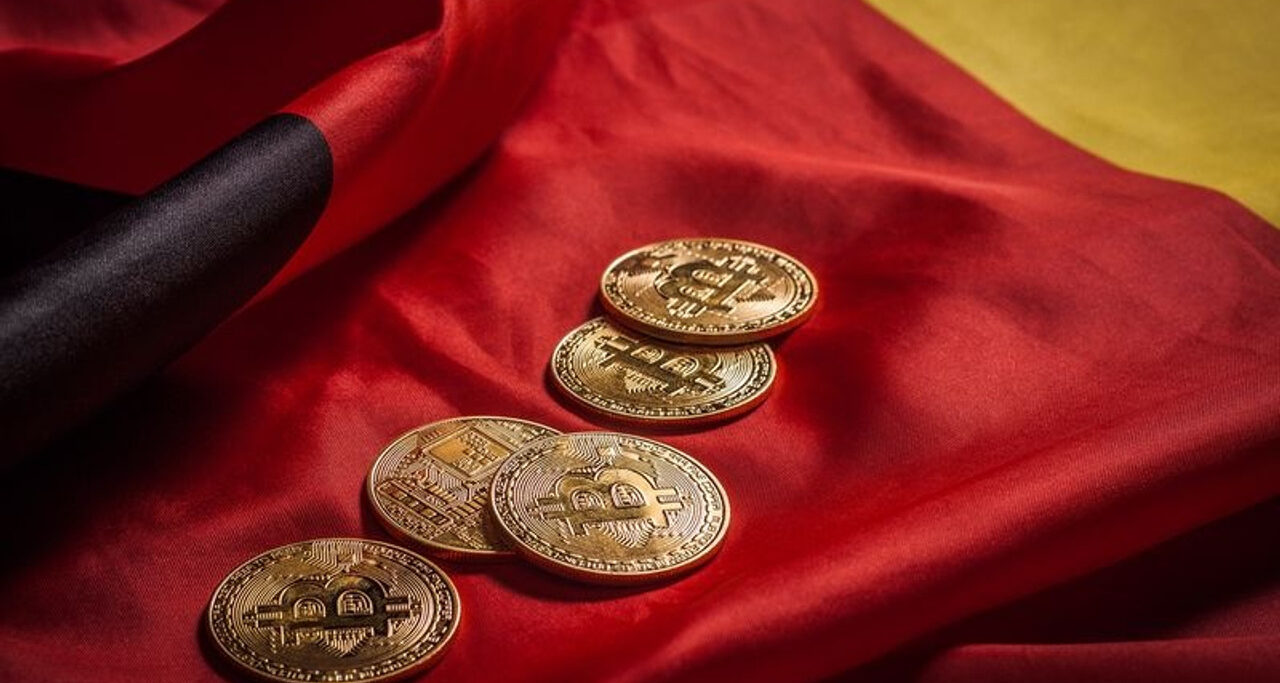Ethereum vs Solana in Germany 2025, Blockchain Showdown

Germany is rapidly adopting the digital economy and Web3 technology, intensifying the rivalry between Ethereum and Solana for dominance in the blockchain ecosystem. Developers, corporations, and investors are watching which blockchain will dominate German adoption as the German government supports progressive crypto legislation and institutional interest grows.
Ethereum, the original smart contract platform, is the standard for decentralized apps, while Solana is a high-performance alternative. German Banks Go, This article compares Ethereum and Solana in terms of their technical, regulatory, and cultural aspects in Germany to determine which blockchain is likely to win the German market in 2025.
Ethereum’s Record and Institutional Momentum
Ethereum’s first-mover advantage is noteworthy. Ethereum, founded in 2015 by Vitalik Buterin, has pioneered decentralized finance (DeFi), non-fungible tokens (NFTs), and smart contract development. Deutsche Telekom and Commerzbank have tested Ethereum-based tokenized securities and cross-border payments. The European Investment Bank created digital bonds utilizing Ethereum’s technology, boosting its credibility with regulators and financial institutions.
The Merge in 2022 transitioned Ethereum to Proof-of-Stake, reducing its energy footprint and aligning it with Germany’s stringent environmental regulations. Germany’s digital transformation plan prioritizes sustainability; therefore, Ethereum’s green pivot promotes its long-term incorporation into public and private sector efforts.
Ethereum’s development ecosystem strengthens its supremacy. German software developers and entrepreneurs are building DeFi protocols, NFT marketplaces, and enterprise-grade Ethereum solutions in Berlin and Munich, as well as at Ethereum developer conferences and blockchain incubators. Many Ethereum Virtual Machine (EVM)-compatible solutions make developer onboarding easy, making it a viable choice for startups and organizations.
A Serious Challenger to Solana’s Speed and Scalability
Due to its high throughput and near-instant finality, Solana has carved out a niche, while Ethereum leads in market capitalization and network effects. Solana can process over 65,000 transactions per second at a low cost, making it a viable use case for real-time applications such as gaming, digital identity, and financial micropayments, which are growing rapidly in Germany.
In 2024, German entrepreneurs began using Solana for quick settlement and low-latency applications, primarily in digital collectibles and tokenized consumer engagement platforms. Users migrated from Ethereum to Solana due to lower costs and a better user experience during the European NFT boom.
Berlin, Hamburg, and Frankfurt have seen an increase in Solana developer gatherings, hackathons, and venture-backed projects. These signs reflect a burgeoning ecosystem that could threaten Ethereum’s monopoly if Solana improves network reliability and avoids outages.
The Solana Foundation’s intentional engagement with European regulators, particularly BaFin, demonstrates a willingness to comply with emerging legislative frameworks, such as MiCA. This proactive approach may help Solana gain credibility from conservative Ethereum-aligned institutions.
Germany’s Balanced Crypto Adoption Regulation
Germany leads EU crypto regulation. BaFin was among the first to recognize cryptocurrencies as financial instruments in 2020 and maintains strict custody, KYC, and asset tokenization rules. The Ethereum and Solana ecosystems are expected to benefit from the EU-wide MiCA framework, which aims to standardize crypto rules by 2025.

Ethereum meets BaFin’s standards due to its maturity, comprehensive documentation, and ongoing collaborations with compliant custodians such as BitGo and Fireblocks. Neobanks and fintechs that are exploring mainstream, regulated crypto products are drawn to Solana’s simplicity and efficiency. German fintechs Solarisbank and Nuri are investigating Solana-based solutions for younger, mobile-first users.
Compliance-led differentiation is replacing regulatory arbitrage in the early stages of crypto adoption. Ethereum’s proven security and regulatory foundations give it an edge, while Solana’s capacity to adapt and customize may give it more flexibility.
Corporate-Public Partnerships for Ecosystem Integration
Automotive, shipping, and insurance companies dominate Germany’s industrial base, making blockchain adoption ideal. Daimler, Bosch, and SAP investigated Ethereum-based supply chain transparency and machine-to-machine payments. Ethereum’s modular architecture and Enterprise Ethereum Alliance enterprise connectors make it ideal for interoperating with legacy systems, which pilots generally prioritize.
Digital natives, especially finance and retail loyalty organizations, like Solana. Companies seeking younger, tech-savvy customers are adopting Solana’s tokenized rewards, cross-platform digital assets, and seamless payment rails. Solana is perceived as agile and innovative, whereas Ethereum is regarded as enterprise-grade.
Germany’s governmental services are also considering blockchain integration. Ethereum’s zk-rollup solutions for verifiable credentials and identification may work for government-backed digital IDs. If Solana proves its security and uptime, it may be utilized for scalable, low-cost infrastructure projects, particularly those in the municipal sector.
Cultural Acceptance and Opinion
Which blockchain dominates Germany depends on public perception and community engagement. Ethereum is widely accepted in academia and the research community. Ethereum development materials are abundant in German, and RWTH Aachen and the University of Mannheim offer Ethereum-focused blockchain courses.
However, Solana has captured the attention of younger audiences. Solana is a cultural phenomenon among Gen Z developers and producers due to its gamified airdrops, mobile money integrations, and Web3-first design philosophy. In Germany’s metropolitan centers, TikTok influencers, YouTube educators, and Telegram Solana groups are gaining popularity rapidly.
This generational split may affect adoption for years. Ethereum may dominate enterprise and institutional spaces, but Solana is generating grassroots momentum that might lead to viral consumer acceptance, especially in retail banking and entertainment.
Summary
Ethereum and Solana possess unique capabilities, and the German market is mature enough to support a dual-chain future in 2025. Ethereum Outpaces BTC, Ethereum leads in institutional trust, security, and legacy integrations. In contrast, Solana is revolutionizing blockchain user experience with speed, affordability, and creativity.
The future of blockchain in Germany may depend on combining both public and private networks. Multichain platforms and interoperability protocols, such as Wormhole, Chainlink CCIP, and LayerZero, enable apps to leverage each chain’s strengths without taking sides. Germany’s Ethereum vs. Solana debate will undoubtedly benefit builders, consumers, and organizations that thrive in a richer, more competitive blockchain ecosystem.
